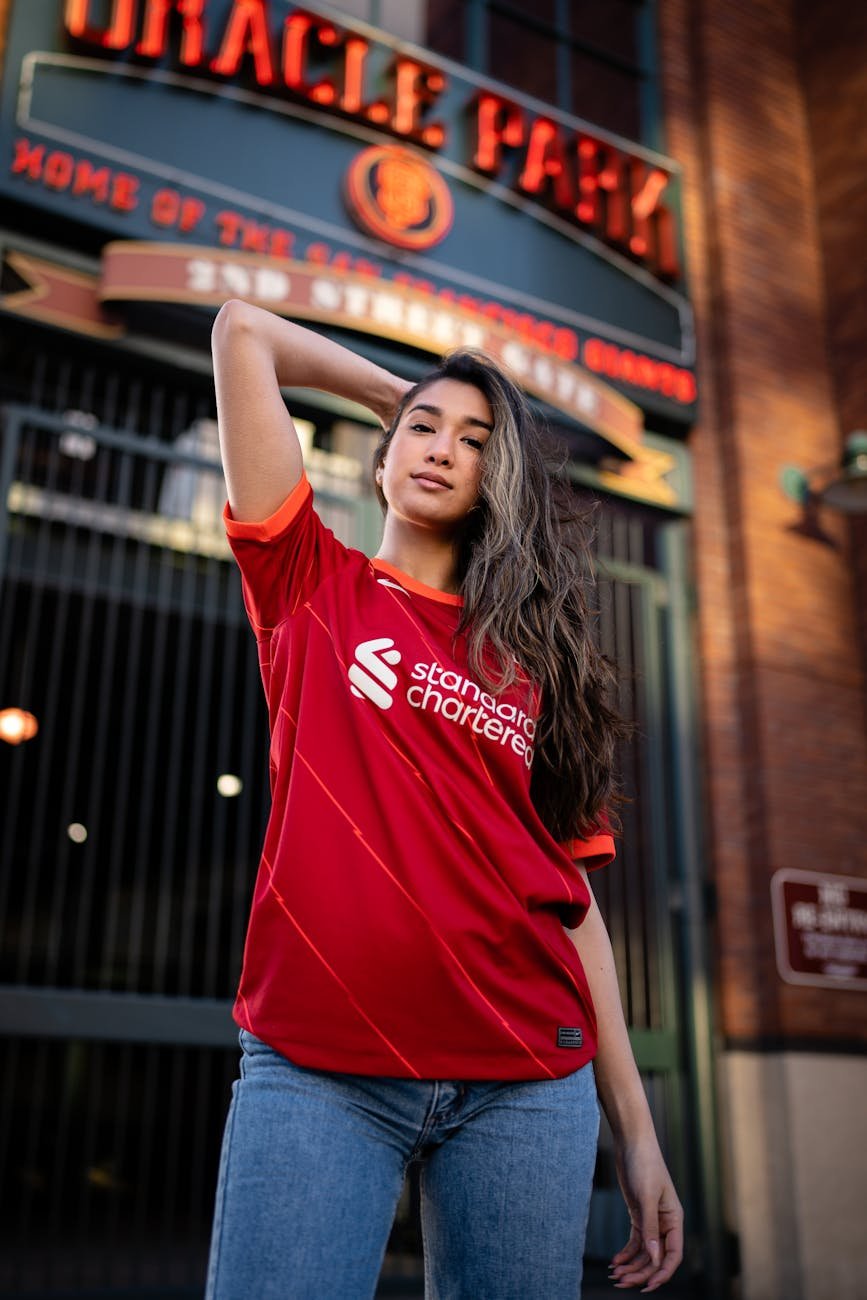Understanding Sports Market Segmentation
Sports market segmentation is a smart way for groups to really get what fans and consumers want. By splitting up the market into different chunks based on certain traits, sports teams, event planners, and product companies can sharpen their marketing weapons, aiming precisely at the targets, making the crowd go wild.
Importance of Market Segmentation
Market segmentation is like a secret weapon in sports marketing. It lets organizations craft their game plans to hit the bullseye with different audiences, boosting both awareness and the cash flow. The perks include:
Targeted Marketing: You get to aim your messages at specific crowd sections, making sure each pitch hits home.
Improved Customer Retention: By tuning into the distinct needs of each group, brands generate loyalty and recurring visits.
Efficient Resource Allocation: Segmentation means you spend your marketing pennies where they’ll count the most, going for the biggest payoffs.
| Benefit | Explanation |
|---|---|
| Targeted Marketing | Zero in on specific groups with sharp messaging. |
| Improved Customer Retention | Build loyalty with custom strategies. |
| Efficient Resource Allocation | Pour efforts into juicy, high-potential areas. |
Types of Market Segmentation
In sports marketing, there’s no one-size-fits-all—various segmentation approaches help tap into different fan bases. Here are the main types:
Demographic Segmentation: This is about sorting folks out by things like age, gender, income, and education. Take the booming market of female sports fans, for example—they’re flexing control over a whopping $28 trillion in global spending.
Geographic Segmentation: This breaks things down by where people live—think regions, cities, even countries. Knowing where your fans hail from lets you tailor marketing that sparks local pride.
Psychographic Segmentation: Here, you’re diving into what makes people tick—their interests, values, how they live, and their emotional ties to sports. This data clues you in on why certain groups flock to certain teams or events.
Behavioral Segmentation: This digs into how fans behave—what they buy, how loyal they are to brands, and how they use products. These nuggets reveal how fans interact with sports stuff and experiences.
For more juicy tidbits on demographics in sports marketing, check out our piece on sports marketing demographics. Get to grips with these strategies if you’re elbow-deep in sports marketing campaigns or crafting killer sports marketing strategies.
Geographical Segmentation in Sports
Geographical segmentation in sports is all about slicing up the market by countries, regions, or cities. This helps sports teams and companies zero in on places packed with their fans, allowing for laser-focused marketing (source).
Targeting Specific Areas
Sports outfits frequently use geographical segmentation to whip up campaigns that strike a chord with the local crowd. By getting a handle on the demographics and tastes of different places, they can whip up spot-on marketing plans. A city-based team, for instance, might create promos just for the home folks.
Age matters too—different age groups dig different stuff. So, whether it’s about the events, gear, or how they sell them, teams consider age to hook everyone from kids to retirees (FanView).
| Region | Popular Sports | Typical Fans | Marketing Approach |
|---|---|---|---|
| North America | Football | Families, Young Adults | Community events, partnerships |
| Europe | Soccer | All Ages | Collabs with local clubs, merch sales |
| Asia | Basketball | Youth, Young Pros | Social media blitzes, interactive promos |
Effective Marketing Strategies
To nail geographical segmentation, sports organizations can try these tricks:
- Local Sponsorships: Teaming up with local businesses can crank up community spirit and put the spotlight on them.
- Tailored Content: Cooking up content that matches local vibes can pull on fans’ heartstrings.
- Event Marketing: Throwing events where the fans are can pump up local excitement and get folks to show up.
- Social Media Targeting: Social media ads can precisely hit audiences based on where they live (social media in sports marketing).
By homing in on what folks in different places like and do, sports organizations can boost their marketing chops. For more scoops on industry-wide tactics, check out our articles on sports marketing strategies and sports marketing campaigns.
Old-fashioned geographical segmentation is a surefire way to step up visibility and rake in revenue by zoning in on particular markets, each with its very own flavor.
Demographic Segmentation in Sports
Splitting up the sports market by stuff like age, gender, income, job, and schoolin’ is the name of the game in demographic segmentation. It’s about figuring out who’s who, letting sports folks craft their campaigns to interest different groups and what they like (source).
Tailoring Campaigns
Sports teams gotta know their crowd if they wanna catch their attention. When it comes to ladies, marketers are sitting up and taking notice. Women are pulling the levers on a whopping $28 trillion in global spending. Brands like Nike are running with the idea, pushing gear and programs just for women, expecting sales to hit big numbers (Fanview).
Age matters too. What gets a kid excited at a soccer game might not get grandma bobbin’ her head. Family-friendly events draw kiddos, while grown folks might appreciate a nod to the health benefits of chuckin’ a frisbee around (FanView).
| Demographic Factor | Targeted Approach |
|---|---|
| Age | Host events and sell goods for specific age brackets |
| Gender | Make stuff and run ads aiming towards women |
| Income | Offer swanky perks or wallet-friendly choices |
| Education Level | Craft ads that speak to different knowledge levels |
Relevance of Demographics
Gotta consider those demographics to really get into the sports fans’ brains. Age plays a big role — as folks from different generations have their quirks. Millenials might love the thrill of sports, while our older pals might be more keen on the health side of things (Western Sydney Pressbooks).
By knowing who likes what, sports organizations can supercharge their marketing punch. Hit the sweet spot for each group, and it could mean more fans in the stands and more dollars to count. Curious for more tips? Dive into our other reads on sports marketing strategies and sports marketing campaigns.
Psychographic Segmentation in Sports
Getting into people’s heads is half the game in sports marketing. It’s about figuring out what makes fans tick. What gets them all fired up? What do they value? Whether it’s the thrill of the game, the sense of belonging, or just getting some exercise in the outdoors. Knowing these bits helps sports brands craft messages that stick.
Emotional Connections
Feelings matter. That rush of adrenaline when your team scores, or the community spirit at the local game – it’s all tied to emotions. For example, firms like Nike know how to hit people right in the feels, highlighting grit and glory. They don’t just sell shoes; they tell stories. Think about their ads that spotlight athletes who triumph against the odds. It’s not just smart marketing but also a way to tie fans’ hearts closer to the brand.
| Emotional Hook | Who Cares | How They Sell It |
|---|---|---|
| Winning is Everything | Hotshot Athletes | Show off amazing comeback tales |
| Bonding with Others | Hometown Fans | Push local game nights and fan meet-ups |
| Aim for the Stars | Gym Buffs | Inspire with personal stories and get-fit tips |
Lifestyle Preferences
How we live our lives says a lot about what we might buy. Are we into sunrise jogs, or do we hit the snooze button and dream? This is where psychographic segmentation comes in—it’s all about fitting products into people’s lifestyles like a glove.
Take sports nuts, for instance. A gear company can zero in on health lovers by offering gym toys or wellness-focused promos. This isn’t just about selling stuff but becoming part of the lifestyle.
Here’s a quick peek at how brands can vibe with different lifestyles:
| Lifestyle Style | What They Push | Ideas in Action |
|---|---|---|
| Health Buffs | Get Moving! | Plug fitness gear and wellness trends |
| Social Animals | Join the Crew | Host team events or endorse local heroes |
| Thrill Seekers | Be There or Be Square | Dive into experience-driven promotions |
Using the psychographic lens, marketers can tailor-made sports marketing that really hits home for fans. This isn’t just a fancy term—it’s the playbook for crafting killer connections and boosting brand loyalty in the super competitive field of sports.
Behavioral Segmentation in Sports
In sports marketing, figuring out what makes fans tick is like finding the secret sauce to boosting ticket sales and keeping the stands packed. Behavioral segmentation breaks down who buys what based on their past actions. It’s all about digging into patterns like what they bought before, how often they’re tuning in, and just how deep their love for the team runs.
Purchase Behavior
This section isn’t rocket science – it’s about understanding shopping habits and dishing out what’s most relevant. By splitting up fans based on how often they buy stuff and how much they’re dropping on team swag, companies can get a good look at:
- Tickets Grabbed: Count of games attended each year.
- Team Gear Cash: Dollars spent on merchandise.
- Renewal Fever: The odds of them grabbing those season tickets again.
According to Deloitte, hardcore fans (the real MVPs) spend way more than the everyday fan. Check out the numbers:
| Spending Category | Fanatic Fans (%) | Casual Fans (%) |
|---|---|---|
| Tickets | 50 | 23 |
| Merchandise | 50 | 17 |
| League-related TV Subscriptions | 20 | 4 |
See the trend? Focusing on those die-hards could really pump up marketing profits.
Brand Loyalty Indicators
Loyalty’s the name of the game, too. To figure out who’s all about the team and who’s just along for the ride, look at:
- Game Day Showing: How many games they’re hitting up versus the ones they could attend.
- Swag Frequency: Are they always buying team stuff, or snagging other brands too?
- Commitment to the Cause: Their eagerness to renew those precious season memberships.
Knowing who’s loyal helps tailor the game plan. Offer super fans exclusive sneak peeks at new merch or give them an early chance to snag tickets. On the flip side, entice the fence-sitters with beginner deals. This way, all fans feel like they’ve got a special place in the team’s heart.
If you’re itching for more tips and tricks on wrapping up sports fans in your marketing net, check out our pieces on sports marketing strategies and sports marketing campaigns.
Sports Fan Segmentation Strategies
You want to make sure your email to fans doesn’t end up in the trash folder, right? Well, that’s when sports fan segmentation swoops in like a last-minute goal. By getting to know what makes fans tick, teams and sports organizations can create messages that actually matter to them, sparking interest and action.
Developing Effective Campaigns
So, what makes fans pull the trigger on grabbing those game tickets or merch? You’ve got to dig into why folks choose to spend their cash on sports stuff. Once you’ve got that figured out, shaping marketing plans becomes a breeze and grabs fans’ attention the right way. You’re on your way to crafting killer marketing plans (Western Sydney).
One smart move is diving into psychographic segmentation—a fancy term for getting the scoop on fans’ attitudes, values, and lifestyles. Take a leaf out of Nike’s book; they tailor their messages so well, everyone from Olympic champs to the neighbor who jogs once a week feels like they’re the VIP (Instapage).
And don’t forget the tri-component model of attitudes. It breaks down how fans feel about your stuff into three parts: thinking, feeling, and doing. Tweak your campaign to give people those warm fuzzies, and you’ll have them coming back for more.
| Component | What It’s About | Why It Matters |
|---|---|---|
| Thinking (Cognitive) | What fans know | Use facts to impress |
| Feeling (Affective) | How fans feel | Use stories to connect |
| Doing (Behavioral) | What fans do | Encourage them to act |
Enhancing Fan Engagement
Being a sports fan isn’t just about spending money and high-fives. It’s about feeling connected and loyal ’til the end. Once teams know what steers fans’ choices, they can create an inclusive vibe (Western Sydney).
Hop on social media, where everyone is already talking sports anyway. Craft campaigns that not only showcase the game but also make fans feel like they’re part of the action. Show some behind-the-scenes pics or update them live during games, and boom, you’ve got their attention.
And while you’re at it, match brands with fans’ interests through sports sponsorship opportunities. Deliver experiences that fans won’t find anywhere else, and they’ll stick around longer than just the duration of the event.
Be the standout in sports marketing by adopting new ideas, offering personal touches, and keeping campaigns fresh. It’s not only about upping the game in visibility and profits. It’s the key to building a die-hard fan base that’ll ride along for the long haul, bringing a win not just on the scoreboard, but to the entire sports scene.
Leveraging Technology in Sports Marketing
Sports marketing? It’s all about turning fans into your number one cheerleaders, and guess who’s getting in on the action? Technology! Teams are finding slick, new ways to chat up their fans and keep the crowd buzzing with excitement.
Personalized Strategies
Now, who doesn’t love a touch of personalization? It’s like having your name screamed across the stadium without leaving your couch. Sports fans today want content that gets them hyped up and feeling like they’re part of the team. With a booming market at 55.14 billion bucks by 2030, there’s no doubt that putting a spin on fan engagement can score massive wins.
Here’s how you can make it personal:
- Data-Driven Marketing: Dive into the fan’s likes and clicks. Using data, sports organizations are crafting messages that hit home every single time.
- Dynamic Communication: Those emails that knew just the exact score before you did — that’s the magic of real-time tech. Swap stale updates for play-by-play narrations!
- Tailored Content: Got a promo? Exclusive video? Deliver the goods that speak directly to a fan’s taste.
| Personalized Marketing Strategies | What You Get |
|---|---|
| Data-Driven Marketing | Talks straight to the core of what fans love |
| Dynamic Communication | Keeps fans on the edge of their seats |
| Tailored Content | Hooks them and keeps them coming back for more |
Nailing these strategies means more than just a happy fan base; it’s about creating a loyal squad that’ll ride with you through ups and downs.
Interactive Fan Experiences
Tech isn’t there just to look pretty; it’s shaking things up with fresh ways to catch and keep fan interest. If you haven’t heard of gamification or AR yet, you’re missing out on how fans are bonding over sports like never before.
Think about:
- Gamification: Bring on the mini-games, quizzes, and challenges that make fans feel like MVPs—during the match!
- Augmented Reality: Get fans into the stadium’s nooks and crannies — virtually, of course! Fans aren’t just watching; they’re immersed right in the thick of it with your team.
- Social Media Engagement: For those who can’t get enough, social media is the buzzing hotline keeping everyone plugged in.
| Interactive Experiences | What’s in it for Fans |
|---|---|
| Gamification | Fun extras make every moment a thrill |
| Augmented Reality | A whole stepping-stone into an interactive dreamland |
| Social Media Engagement | Keeps the fan vibe alive 24/7 |
When sports tech and fan experience collide, it’s all about generating unforgettable moments that fans will share far and wide, shouting to the world. To stay at the top of their game, teams must keep the momentum rolling and embrace these cutting-edge trends swiftly. Digging deeper into sports marketing strategies and sports marketing demographics unveils how this arena is shifting—don’t blink, or you might miss it!
Case Studies in Fan Segmentation
Sports teams, event planners, and those hawking sports merchandise can learn a thing or two from real-life examples of smart ways to sort fans. Let’s dive into two standout situations showing how real-time data and clever email strategies are making waves in sports marketing.
Real-Time Data Engagement
When the Detroit Pistons hit the court, they also hit fans’ inboxes with live updates. By sending emails that updated themselves with current game data, they kept ticket holders in the loop and glued to the action. Here’s what they found:
| Metric | Improvement |
|---|---|
| Email Click-Through Rates | 18% |
| Engagement Time | 45% |
| Mobile Engagement | 49% |
Creating this dual-screen experience made fans feel like they were part of the game, even in the stands. It shows how using up-to-the-minute info can really click with fans. For more cool strategies like this, check out our article on sports marketing campaigns.
Dynamic Email Strategies
West Ham United swung back fan engagement by tailoring dynamic emails specifically to re-spark interest from those who hadn’t clicked in a while. This game plan was super successful:
| Metric | Outcome |
|---|---|
| New Subscribers Gained | 11,577 |
| Increased Return on Investment (ROI) | Big Win |
Bringing old fans back into the fold boosted their ROI and gave them important clues on keeping fans hooked in the future (N3XT Sports). This just goes to show how a little customization can reignite love and loyalty from fans. For more juicy details, see our article on sports marketing case studies.
Both these tales underline how crucial it is to get personal and creative when trying to understand and connect with sports fans. By using real-time data and focused email marketing, sports groups can brighten their brand, up interactions, and cash in on the buzz.
Future Trends in Sports Marketing
The sports biz keeps changing, so it’s critical for team managers, event planners, and gear makers to keep on their toes. Two happening trends shaking up sports marketing are personalized communication and new ways to keep fans hooked.
Personalized Communication
In a world where everyone’s glued to their screens, sports marketing has stepped up its game. Teams and brands are honing in on the personal touch to boost fan love and build loyalty. When you speak directly to people, they connect better and stick around longer. In today’s sports scene, having that direct, genuine contact with fans isn’t just nice, it’s a must (University of Kansas).
Let’s get into how this plays out in real life:
| Strategy | What It Means |
|---|---|
| Custom Content | Putting out stuff that matches what different fan groups like and care about. |
| Real-Time Emails | Sending out emails that update during games with fresh stats and info. |
| Social Media Chats | Talking back to fans on social media, making the bond feel real. |
| Special Deals | Giving fans offers that match their buying habits and likes. |
By tuning into what each fan wants, sports teams can build tighter relationships, which keeps the loyalty fires burning hot in today’s crowded market (N3XT Sports).
Innovations in Fan Engagement
Sports marketing’s jumping into the future with tech like gamification and Augmented Reality (AR), revolutionizing how fans engage. It’s all about crafting online adventures fans won’t forget, helping teams and brands chat up customers and showcase their stuff.
Trendy tech making waves with fans includes:
| Technology | How It’s Used |
|---|---|
| Gamification | Sprinkling game-like fun into promo stuff to amp up enthusiasm and fan action. |
| Augmented Reality | Letting fans virtually mingle with teams and players for a new kind of fan fun. |
| Mobile Apps | Giving instant access to scores, player updates, and fan speaks during live games. |
| Interactive Content | Inviting fans into the action with quizzes and polls, making the brand feel more like home. |
AR, especially, offers game-changing, unforgettable experiences that pull fans in and keep marketing campaigns popping (University of Kansas). By digging into fan data and using it smartly, sports groups can whip up content that clicks with their crowd, boosting brand visibility and keeping ties strong.
These new trends scream the need for staying quick on one’s feet and thinking forward in sports marketing, helping organizations connect more deeply with fans while ramping up the engagement factor.




















